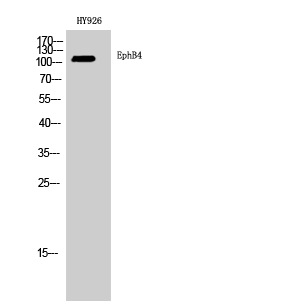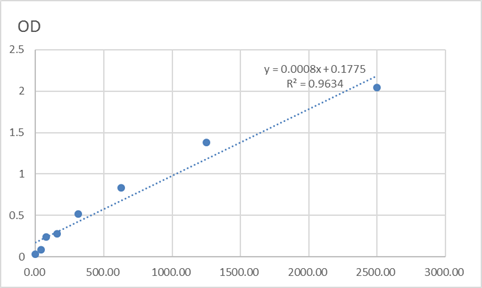Total EphB4 Cell-Based Colorimetric ELISA Kit
- Catalog No.:KA3644C
- Applications:ELISA
- Reactivity:Human;Mouse
- Gene Name:
- EPHB4
- Human Gene Id:
- 2050
- Human Swiss Prot No:
- P54760
- Mouse Swiss Prot No:
- P54761
- Storage Stability:
- 2-8°C/6 months
- Other Name:
- Ephrin type-B receptor 4 (EC 2.7.10.1) (Hepatoma transmembrane kinase) (Tyrosine-protein kinase TYRO11)
- Detection Method:
- Colorimetric
- Background:
- catalytic activity:ATP + a [protein]-L-tyrosine = ADP + a [protein]-L-tyrosine phosphate.,function:Receptor for members of the ephrin-B family. Binds to ephrin-B2. May have a role in events mediating differentiation and development.,PTM:Autophosphorylated.,similarity:Belongs to the protein kinase superfamily. Tyr protein kinase family.,similarity:Belongs to the protein kinase superfamily. Tyr protein kinase family. Ephrin receptor subfamily.,similarity:Contains 1 protein kinase domain.,similarity:Contains 1 SAM (sterile alpha motif) domain.,similarity:Contains 2 fibronectin type-III domains.,tissue specificity:Abundantly expressed in placenta and in a range of primary tissues and malignant cell lines. Expressed in fetal, but not adult, brain, and in primitive and myeloid, but not lymphoid, hematopoietic cells.,
- Function:
- protein amino acid phosphorylation, phosphorus metabolic process, phosphate metabolic process, cell surface receptor linked signal transduction, enzyme linked receptor protein signaling pathway, transmembrane receptor protein tyrosine kinase signaling pathway, cell proliferation, phosphorylation, regulation of angiogenesis,
- Subcellular Location:
- Cell membrane ; Single-pass type I membrane protein .
- Expression:
- Abundantly expressed in placenta but also detected in kidney, liver, lung, pancreas, skeletal muscle and heart. Expressed in primitive and myeloid, but not lymphoid, hematopoietic cells. Also observed in cell lines derived from liver, breast, colon, lung, melanocyte and cervix.
- June 19-2018
- WESTERN IMMUNOBLOTTING PROTOCOL
- June 19-2018
- IMMUNOHISTOCHEMISTRY-PARAFFIN PROTOCOL
- June 19-2018
- IMMUNOFLUORESCENCE PROTOCOL
- September 08-2020
- FLOW-CYTOMEYRT-PROTOCOL
- May 20-2022
- Cell-Based ELISA│解您多样本WB检测之困扰
- July 13-2018
- CELL-BASED-ELISA-PROTOCOL-FOR-ACETYL-PROTEIN
- July 13-2018
- CELL-BASED-ELISA-PROTOCOL-FOR-PHOSPHO-PROTEIN
- July 13-2018
- Antibody-FAQs



